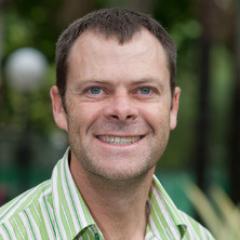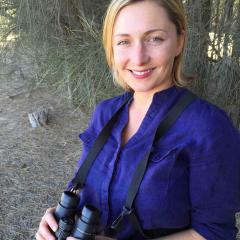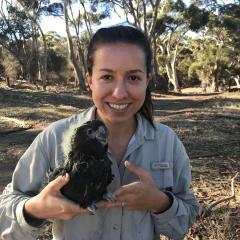The work of CBCS PhD student Daniella Teixeira in a NESP Threatened Species Recovery Hub project is helping to improve the monitoring of the Kangaroo Island glossy black-cockatoo and the south-eastern red-tailed black cockatoo in bushfire-prone areas through the use of bioacoustic technology.
Using sound for conservation
Recovery of these two federally listed Endangered subspecies has been hampered by low breeding success. Their nests are rare, and often located in remote places or private lands, making traditional monitoring methods difficult or infeasible. This has led to a limited understanding of factors affecting breeding site choice and fledging success rates, and consequent difficulties in conducting effective management.
However, bioacoustic monitoring is a technology that provides a simple yet efficient method for collecting data from nests across the landscape, meaning that monitoring nesting on a large scale is possible for the first time. Daniella amassed black-cockatoo vocalisations across thousands of hours of recording at nest sites. Working with the Ecosounds Lab at Queensland University of Technology, she developed a semi-automatic call classifier that can detect important black-cockatoo vocalisations, such as fledging calls, in long-duration sound recordings. This tool will provide managers with a way to process sound data to extract information that is important to the conservation of these two birds.
The success of Daniella’s research has already led to the south-eastern red-tailed black-cockatoo recovery team purchasing 60 new recorders and deploying them in the field at active and potential nest sites in Victoria, including newly installed artificial nest boxes. Following the devastating bushfires on Kangaroo Island, there is great scope to use Daniella’s bioacoustics method to understand how the Kangaroo Island glossy black-cockatoo’s breeding behaviours and breeding success rates are being impacted by that event, and therefore to prepare for any future catastrophic events.
Black-cockatoos in 2020 and beyond
Daniella has developed a high profile through her public engagement activities for black-cockatoos, and has spoken at many public events in Queensland, New South Wales, Victoria and South Australia, including the World Science Festival, Science in the Pub, and Threatened Species Day events through her project’s social media page, @blackcockatooproject. She has featured on radio and television programs promoting bioacoustics and black-cockatoo conservation and is an active member of the Glossy Black Conservancy, where she supports communications and citizen science programs.
Working on several black-cockatoo subspecies across the country, Daniella recognised the need for improved collaboration between conservation practitioners. She co-organised the National Black Cockatoo Forum in Melbourne in 2018, where over 40 black-cockatoo practitioners met to address key issues for the conservation of all black-cockatoo species. In early 2020, Daniella participated in Kangaroo Island Wildlife Recovery Workshop, where she helped form a plan for the recovery of the black-cockatoo that includes bioacoustics as a monitoring tool.
Daniella’s supervisors include CBCS researchers Dr Berndt Janse van Rensburg and Professor Martine Maron.
Key government partners
- Natural Resources Kangaroo Island
- South Australian Department for Environment and Water
- Victorian Department of Environment, Land, Water and Planning
Reference
Teixeira, D., Maron, M., and Janse van Rensburg, B. 2019. Bioacoustic monitoring of animal vocal behaviour for conservation. Conservation Science and Practice, DOI: 10.1111/csp2.72
Photo: Daniella with a black-cockatoo nestling. Mike Barth



